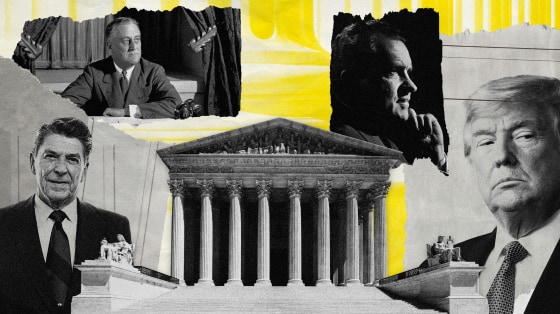The death of Justice Ruth Bader Ginsburg gave President Donald Trump his third opportunity to nominate a justice to the Supreme Court.
In a little more than four weeks, Trump secured enough votes in the Senate to get a vote on his nomination as well as to win the confirmation vote, all in the fewer than 40 days between nomination and Election Day.
The number of days Justice Amy Coney Barrett's nomination took was unusual. According to an NBC News analysis of U.S. Senate records, the number of days between a nomination and its confirmation has ballooned from an average of two weeks in the first half of the 1900s to more than two months since 2000.
On the process of Supreme Court nominations, the Constitution says that the president “shall nominate, and by and with the Advice and Consent of the Senate, shall appoint … Judges of the supreme Court.” In short, the president must nominate a choice, and the nominee must then be confirmed by the Senate.
Since the late 1960s, the general steps of the Judiciary Committee during Supreme Court nominations usually include an investigative stage before the hearing, public hearings, and a committee decision.
Once Trump nominates an individual for consideration, that person goes through an FBI background check, and the Senate Judiciary Committee will also complete its own investigation of the nominee. Committee Chairman Sen. Lindsey Graham, R-S.C., will set the hearing timeline, and once the committee holds its hearings on the nominee, it will then vote favorably or negatively or give no recommendation and send it to the full Senate. A simple majority vote in the Senate is needed to confirm the nominee.
A speedy confirmation is not impossible, especially given that the president and the Senate majority are both of the same political party. In the time since John F. Kennedy's presidency, Democratic presidents have appointed eight justices, compared to the 15 justices confirmed for Republicans. In 1869 Congress set the number of justices at nine. Since then, President Franklin Roosevelt, a Democrat, set the record for the most justices nominated and confirmed.

